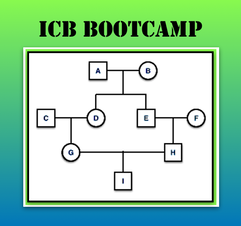Coefficient of Inbreeding Boot Camp
|
FREE |
|
|
|
|
TOPICS
What is inbreeding? What does the coefficient of inbreeding tell you? How is it calculated? How many generations of pedigree data should you use? How high is "high"? The right and wrong ways to use it Extending COI to determine relatedness of populations and breeds |
COURSE INFO
How long? Somebody who is generally familiar with the coefficient of inbreeding and understands how it is computed should be able to get through the course in a few hours. If you don't know much about the inbreeding coefficient already, take your time, go at your own pace, and go back to a previous lesson if you need to. It can be really useful (and more fun!) to take a class with some friends or fellow breeders, so make a study group! How hard? This is boot camp. Hard work will pay off! |


